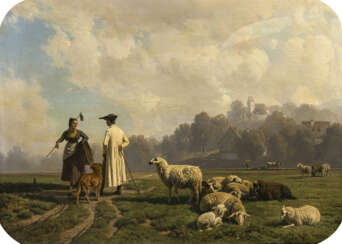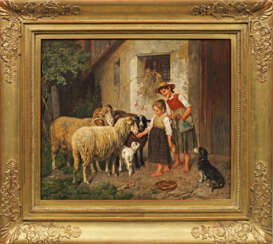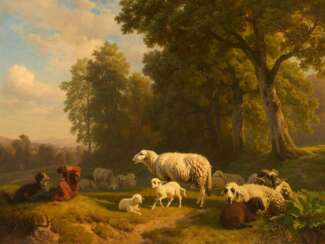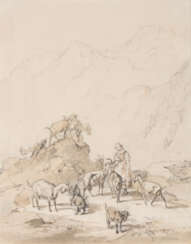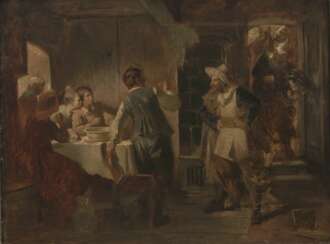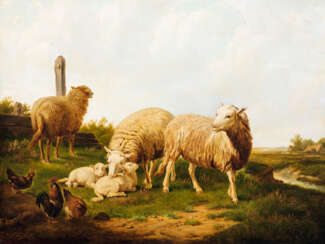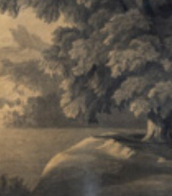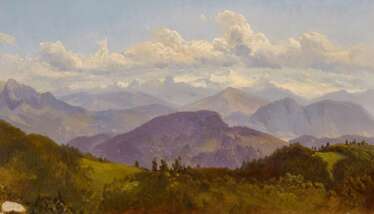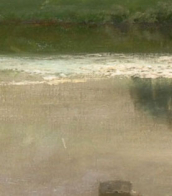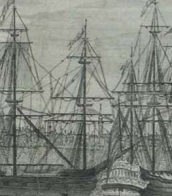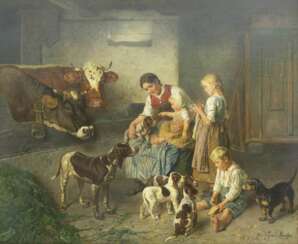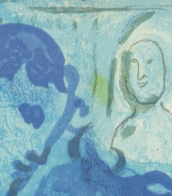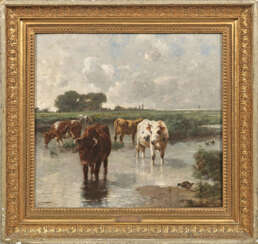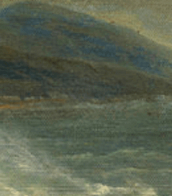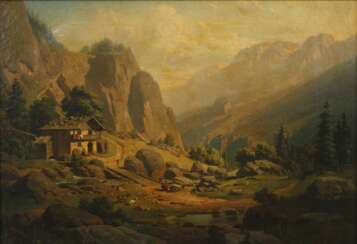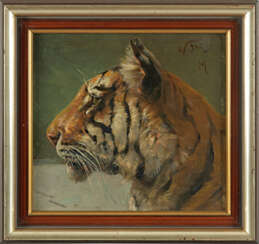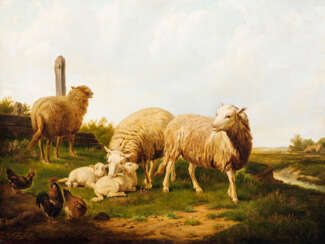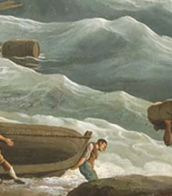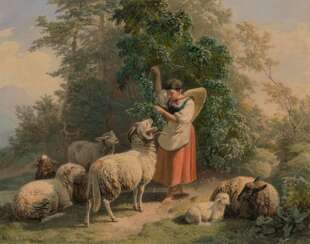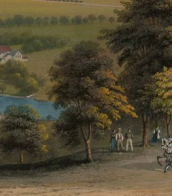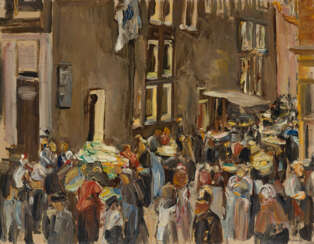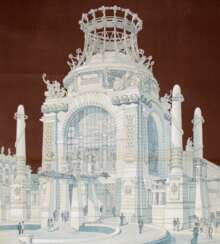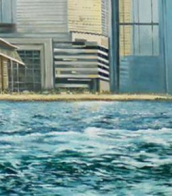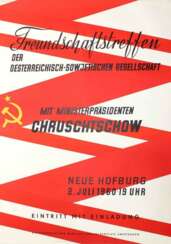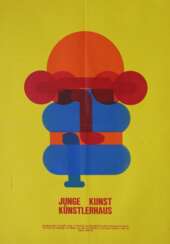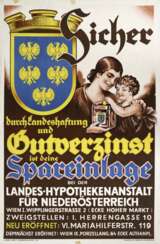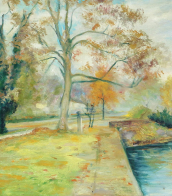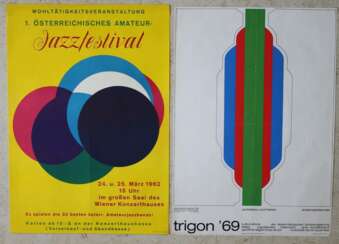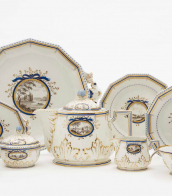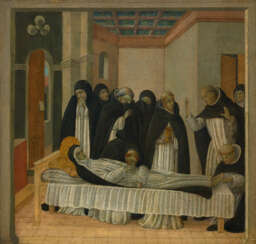robert eberle
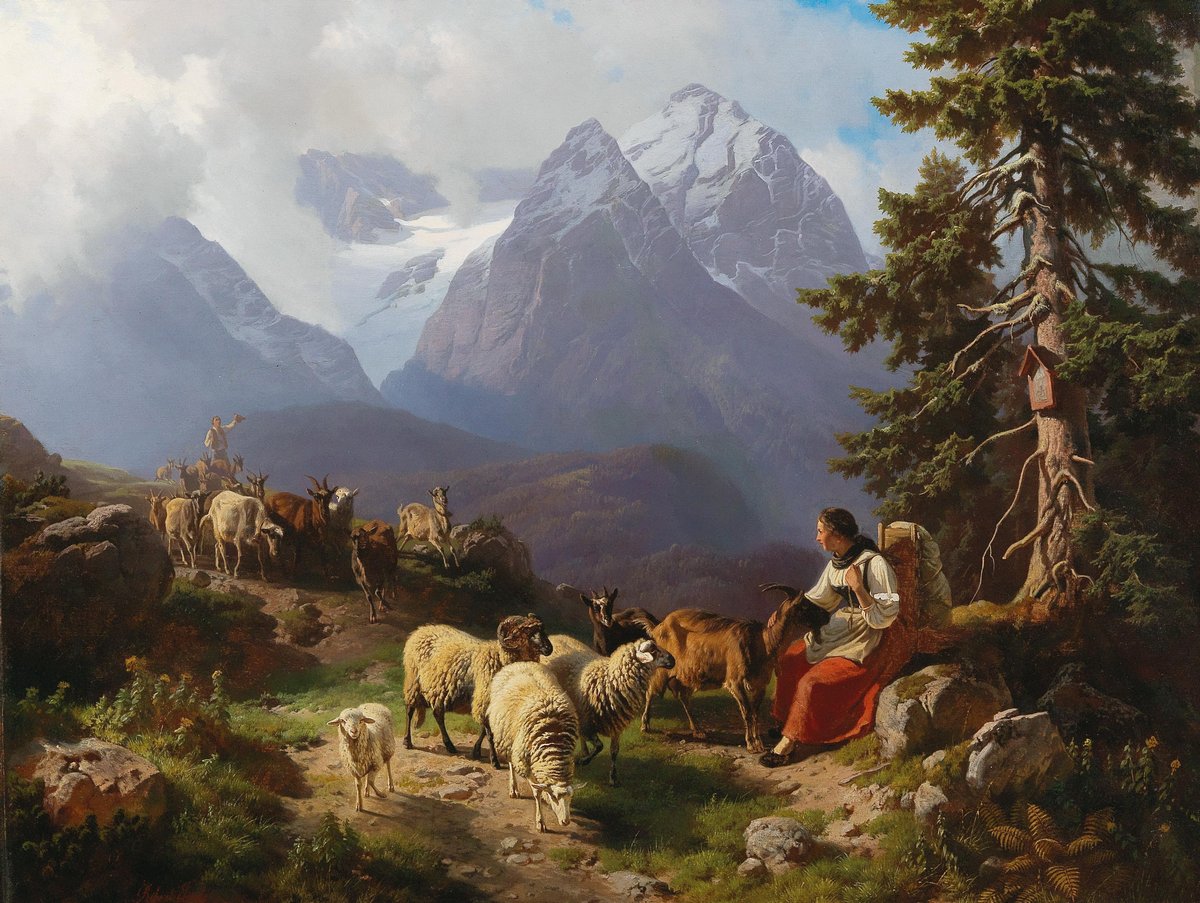
Robert Eberle was a German painter. He was educated in Konstanz, where he was a pupil of the Swiss landscape and animal painter John Jacob Biedermann. In 1830 he moved to Munich and continued his education with Karl Theodor von Piloti and studied the works of Röysdal and Dujardin.
Eberle was known as a realist painter and quickly gained recognition for his genre scenes and depictions of animals, especially sheep, dogs and poultry. His son, Adolphe Eberle, was also an animal painter.
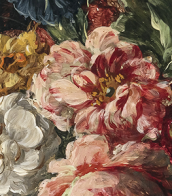
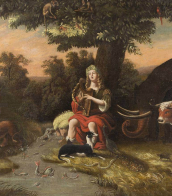
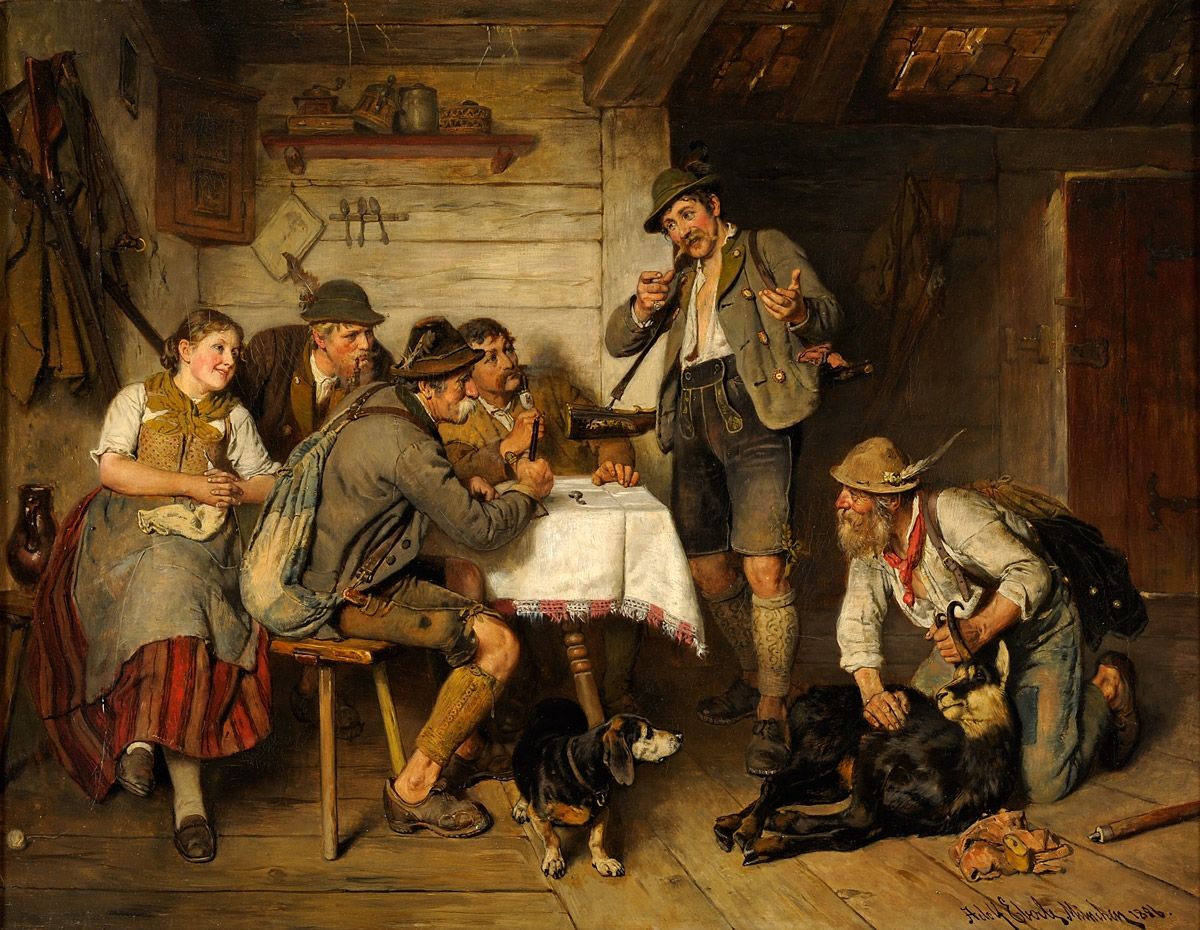
Adolf Eberle was a German painter of the second half of the nineteenth and early twentieth centuries. He is known as a genre painter and animalist.
Adolf Eberle specialized in depicting rural life, especially Bavarian and Tyrolean farmers and hunters. Early in his career, he was interested in historical subjects, but quickly returned to depicting peasant and animal life. His painting "The Sale of the Last Cow" brought him his first great success in 1861, and in 1879 at the Munich exhibition his work "The First Deer" was highly praised by the jury.
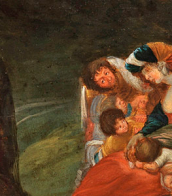

Robert Eberle was a German painter. He was educated in Konstanz, where he was a pupil of the Swiss landscape and animal painter John Jacob Biedermann. In 1830 he moved to Munich and continued his education with Karl Theodor von Piloti and studied the works of Röysdal and Dujardin.
Eberle was known as a realist painter and quickly gained recognition for his genre scenes and depictions of animals, especially sheep, dogs and poultry. His son, Adolphe Eberle, was also an animal painter.
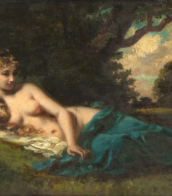

Robert Eberle was a German painter. He was educated in Konstanz, where he was a pupil of the Swiss landscape and animal painter John Jacob Biedermann. In 1830 he moved to Munich and continued his education with Karl Theodor von Piloti and studied the works of Röysdal and Dujardin.
Eberle was known as a realist painter and quickly gained recognition for his genre scenes and depictions of animals, especially sheep, dogs and poultry. His son, Adolphe Eberle, was also an animal painter.
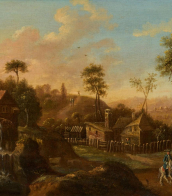

Robert Eberle was a German painter. He was educated in Konstanz, where he was a pupil of the Swiss landscape and animal painter John Jacob Biedermann. In 1830 he moved to Munich and continued his education with Karl Theodor von Piloti and studied the works of Röysdal and Dujardin.
Eberle was known as a realist painter and quickly gained recognition for his genre scenes and depictions of animals, especially sheep, dogs and poultry. His son, Adolphe Eberle, was also an animal painter.


Robert Eberle was a German painter. He was educated in Konstanz, where he was a pupil of the Swiss landscape and animal painter John Jacob Biedermann. In 1830 he moved to Munich and continued his education with Karl Theodor von Piloti and studied the works of Röysdal and Dujardin.
Eberle was known as a realist painter and quickly gained recognition for his genre scenes and depictions of animals, especially sheep, dogs and poultry. His son, Adolphe Eberle, was also an animal painter.
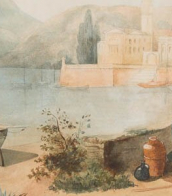

Adolf Eberle was a German painter of the second half of the nineteenth and early twentieth centuries. He is known as a genre painter and animalist.
Adolf Eberle specialized in depicting rural life, especially Bavarian and Tyrolean farmers and hunters. Early in his career, he was interested in historical subjects, but quickly returned to depicting peasant and animal life. His painting "The Sale of the Last Cow" brought him his first great success in 1861, and in 1879 at the Munich exhibition his work "The First Deer" was highly praised by the jury.
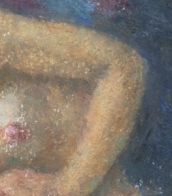

Robert Eberle was a German painter. He was educated in Konstanz, where he was a pupil of the Swiss landscape and animal painter John Jacob Biedermann. In 1830 he moved to Munich and continued his education with Karl Theodor von Piloti and studied the works of Röysdal and Dujardin.
Eberle was known as a realist painter and quickly gained recognition for his genre scenes and depictions of animals, especially sheep, dogs and poultry. His son, Adolphe Eberle, was also an animal painter.
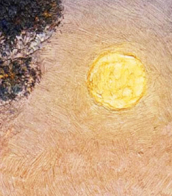

Robert Eberle was a German painter. He was educated in Konstanz, where he was a pupil of the Swiss landscape and animal painter John Jacob Biedermann. In 1830 he moved to Munich and continued his education with Karl Theodor von Piloti and studied the works of Röysdal and Dujardin.
Eberle was known as a realist painter and quickly gained recognition for his genre scenes and depictions of animals, especially sheep, dogs and poultry. His son, Adolphe Eberle, was also an animal painter.
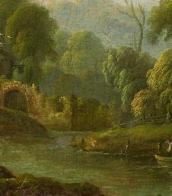
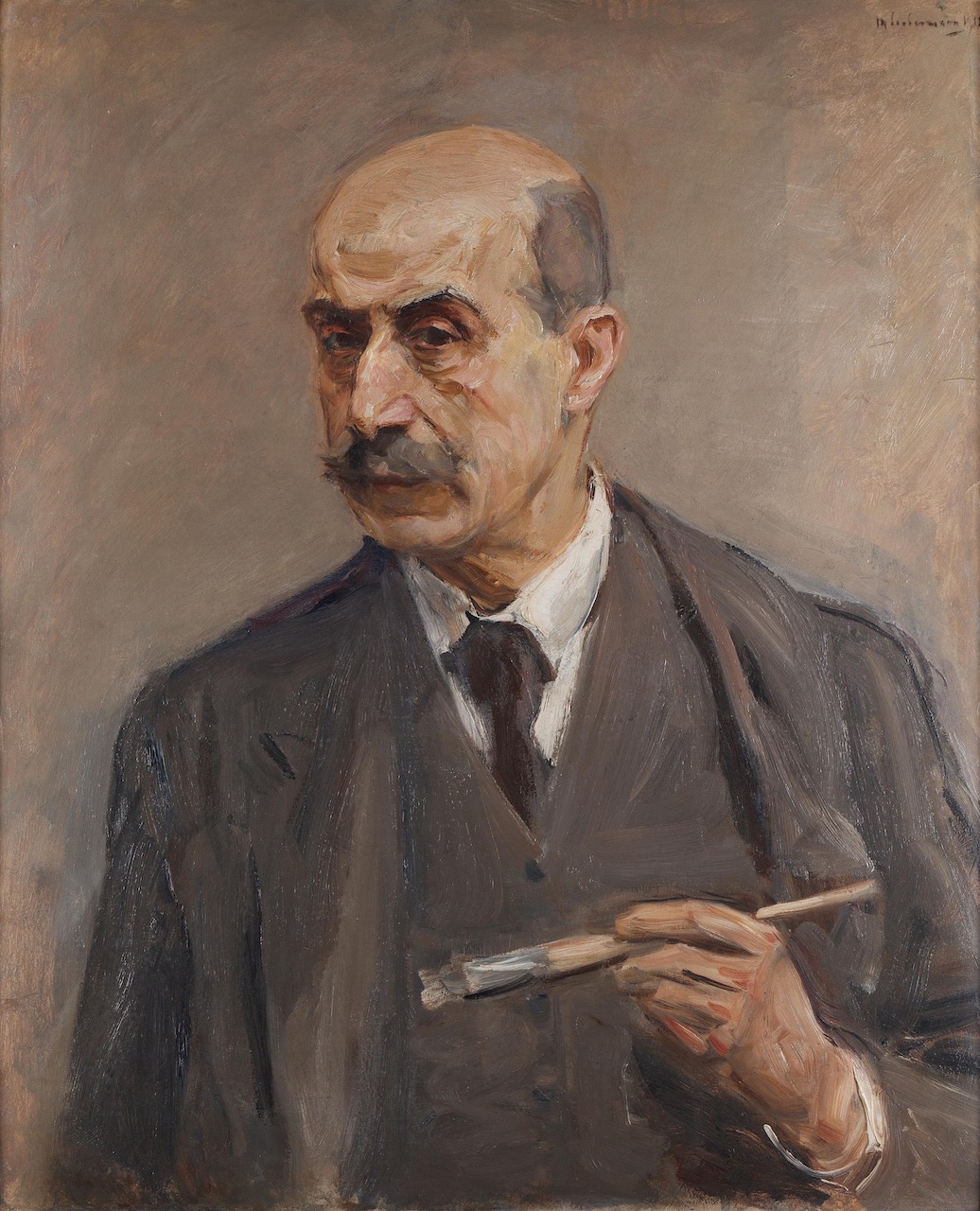
Max Liebermann was a German painter and printmaker, and one of the leading proponents of Impressionism in Germany and continental Europe. In addition to his activity as an artist, he also assembled an important collection of French Impressionist works.

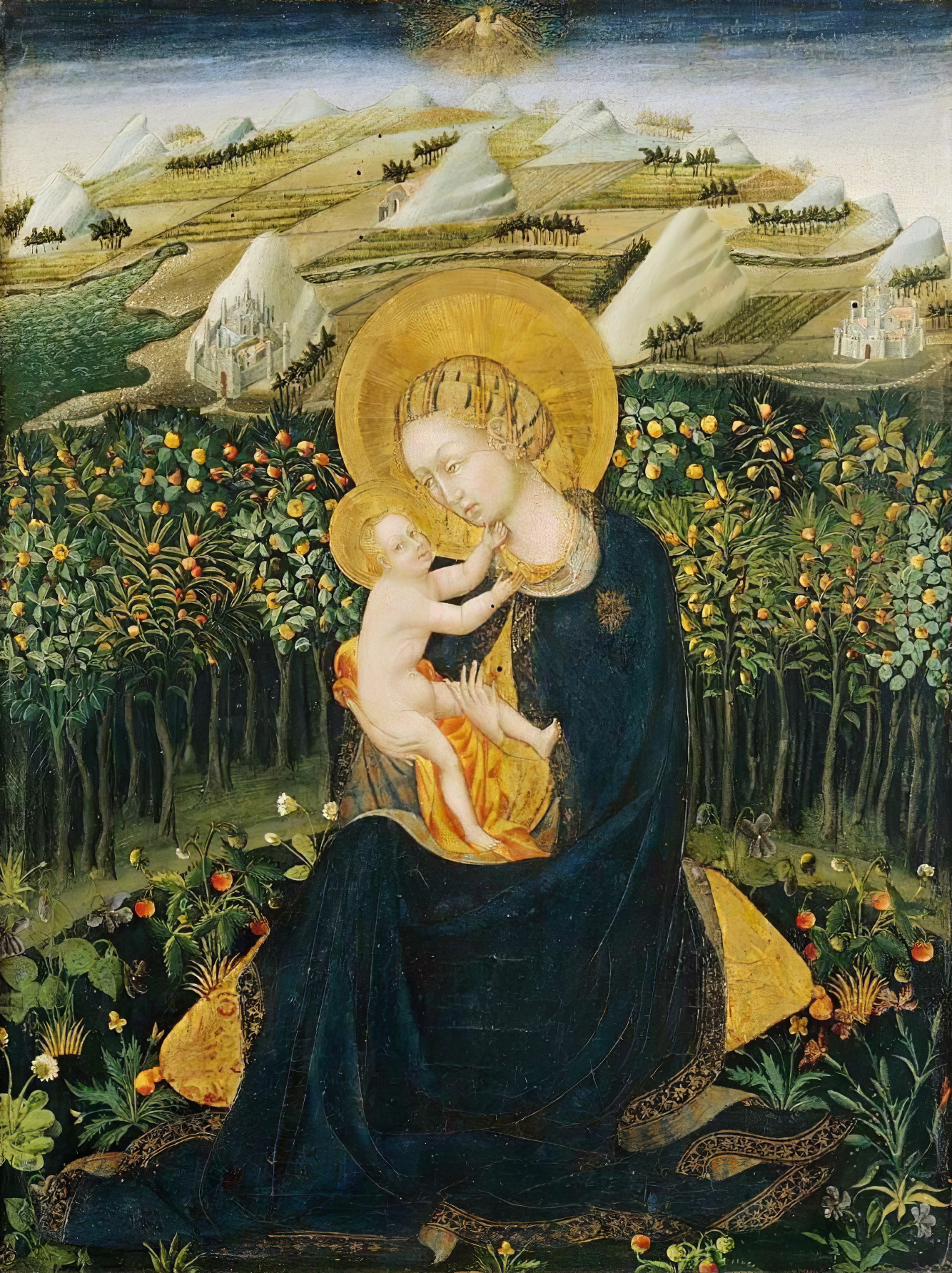
Giovanni di Paolo di Grazia was an Italian painter, working primarily in Siena, becoming a prolific painter and illustrator of manuscripts, including Dante's texts. He was one of the most important painters of the 15th century Sienese School. His early works show the influence of earlier Sienese masters, but his later style was more individual, characterized by cold, harsh colours and elongated forms. His style also took on the influence of International Gothic artists such as Gentile da Fabriano. Many of his works have an unusual dreamlike atmosphere, such as the surrealistic Miracle of St. Nicholas of Tolentino painted about 1455 and now housed in the Philadelphia Museum of Art, while his last works, particularly Last Judgment, Heaven, and Hell from about 1465 and Assumption painted in 1475, both at Pinacoteca Nazionale (Siena), are grotesque treatments of their lofty subjects. Giovanni's reputation declined after his death but was revived in the 20th century.

